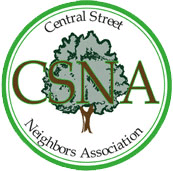New AT&T Utility Boxes Spark New Group
Robert Broome and a group formed "in resistance to AT&T's placement of the huge [VRAD Project Lightspeed] boxes" and in particular the one at Highland/Hartzell have started a website, stopthebox.org. They plan to speak out at the Council meeting Mon. 9/22.
CSNA has not yet been involved either for or against the VRAD boxes, about 95 of which are in the works, spread around much of Evanston. See the City map of the installations for which permits have been OK'd. No CSNA member has previously brought this to the Board's attention or asked for us to take a position. But I thought it was of interest.
My opinion? None are planned for my frontyard or for that matter my backyard. NW Evanston seems to be getting its share, no more. But these boxes are about the ugliest civic "improvement" I've seen, and I am skeptical that cable bills will go down even a penny as a result of "competition." Considering that technology has made everything smaller, I was also shocked at their size, and feel real sorry for any homeowner whose parkway suddenly sprouts one. You'd think they would be mainly placed in or along alleys, or that the City would have made AT&T negotiate with commercial property owners who have a couple unused exterior s.f.
Click here to read the Roundtable article on the boxes (you have to scroll down the page).
Forums:
- Log in to post comments

jeffpsmith
Mon, 09/22/2008 - 12:36
Permalink
More on VRAD Boxes
For those interested in learning more about these boxes, there is a 17-slide PDF presentation on the City's website at http://www.cityofevanston.org/pdf/ATT.pdf.
The City website attributes the arrival of the boxes to an Illinois Commerce Commission ruling granting AT&T a statewide franchise and barring municipalities from refusing to grant right-of-way access.
One wonders where the limits to that would be -- could the entire parkway of a street be converted to an array of various companies' equipment? -- and why Illinois is such a pushover. In Connecticut, the State took the side of homeowners, who complained that the boxes were property-value killers, and has ruled that AT&T has to get the consent of homeowners and municipalities before installation.
Here, AT&T is agreeing to spend up to $1500 on landscape screening (on at most 3 sides of the boxes) per residential-neighborhood install, but the City (i.e. you and I) will pay for landscaping on public property-abutting sites.
The idea of the boxes is to increase bandwidth for DSL Internet service and hi-definition cable TV. As such it gives AT&T a competitive edge v. Comcast. Complaints about the VRAD boxes, besides their intrusiveness, is that they are potential graffiti targets, and that at least 4 have exploded or caught fire, allegedly due to a defective battery system that's since been replaced.
rbroome
Tue, 09/23/2008 - 07:32
Permalink
Update on AT&T VRAD boxes and yesterday's council meeting
Eleven residents lined up to speak out against the VRAD boxes at last night(9/22/08)'s city council meeting. Some themes noticed by me and brought by others: